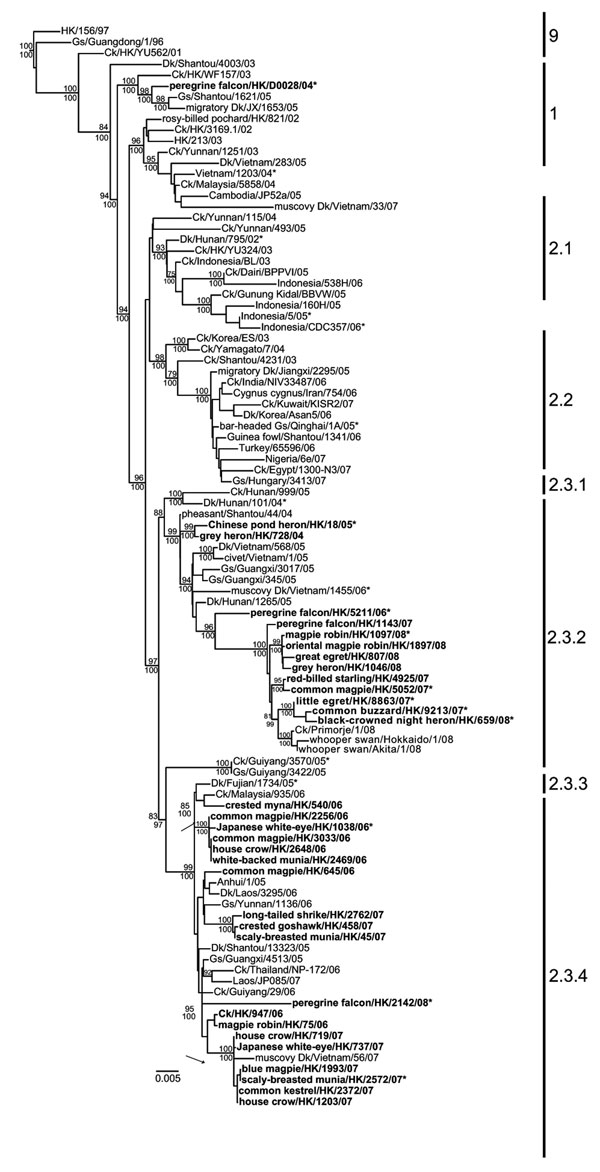Characterization of Avian Influenza Viruses A (H5N1) from Wild Birds, Hong Kong, 2004–2008
Gavin J.D. Smith
1, Dhanasekaran Vijaykrishna
1, Trevor M. Ellis, Kitman C. Dyrting, Y.H. Connie Leung, Justin Bahl, Chun W. Wong, Huang Kai, Mary K.W. Chow, Lian Duan, Allen S.L. Chan, Li Juan Zhang, Honglin Chen, Geraldine S.M. Luk, J.S. Malik Peiris, and Yi Guan

Author affiliations: State Key Laboratory of Emerging Infectious Diseases/The University of Hong Kong, Hong Kong Special Administrative Region, People’s Republic of China (G.J.D. Smith, D. Vijaykrishna, Y.H.C. Leung, J. Bahl, H. Kai, L. Duan, L.J. Zhang, H. Chen, J.S.M. Peiris, Y. Guan); Agriculture, Fisheries and Conservation Department, Hong Kong (T.M. Ellis, K.C. Dyrting, C.W. Wong, M.K.W. Chow, A.S.L. Chan, G.S.M. Luk); HKU-Pasteur Research Centre, Pokfulam, Hong Kong (J.S. Malik Peiris)
Main Article
Figure

Figure. Phylogenetic relationships of the hemagglutinin genes of representative influenza viruses. Numbers above and below the branch nodes indicate neighbor-joining bootstrap values >70% and Bayesian posterior probabilities >95%, respectively. Not all supports are shown due to space constraints. Analyses were based on nt 49–1,677 and the tree rooted to duck/Hokkaido/51/1996. Numbers to the right of the figure refer to World Health Organization influenza (H5N1) clade designations (Appendix Table). Viruses isolated from wild birds and chickens in Hong Kong from 2004–2008 are in boldface. *Indicates viruses included in the antigenic analysis (Table). Scale bar indicates 0.01 nucleotide substitutions per site. Ck, chicken; Dk, duck; Gs, goose; HK, Hong Kong.
Main Article
Page created: December 07, 2010
Page updated: December 07, 2010
Page reviewed: December 07, 2010
The conclusions, findings, and opinions expressed by authors contributing to this journal do not necessarily reflect the official position of the U.S. Department of Health and Human Services, the Public Health Service, the Centers for Disease Control and Prevention, or the authors' affiliated institutions. Use of trade names is for identification only and does not imply endorsement by any of the groups named above.
